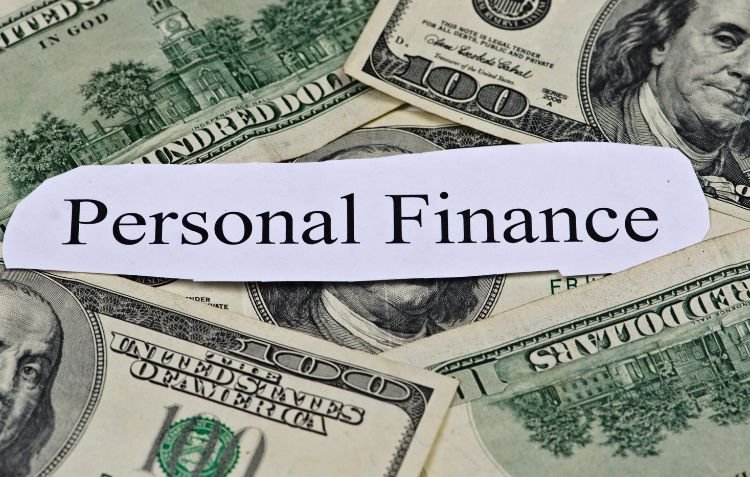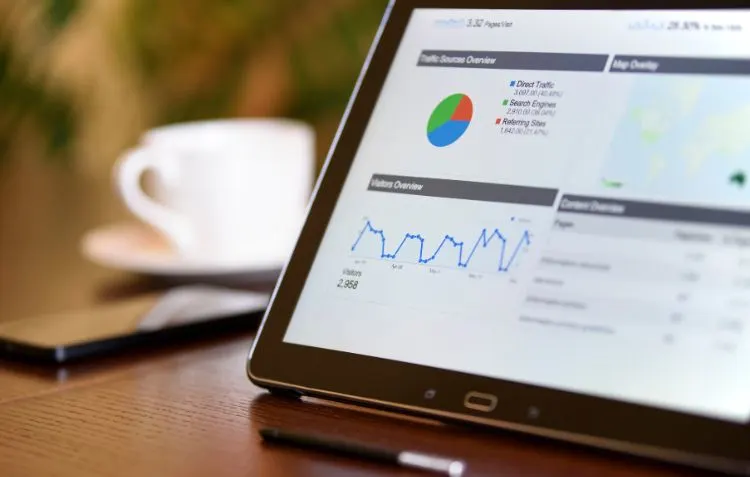Top Free Personal Finance Software to Unlock Your Financial Potential
Did you know that nearly 60% of Americans live paycheck to paycheck, and only 33% have a solid financial plan in place? (Source: LendingClub). Managing personal finances is a challenge for many, often leading to overspending, mounting debt, and missed savings opportunities. However, with the right tools, anyone can take control of their money and build a secure financial future.
This is where top free personal finance software comes into play. These tools provide budgeting assistance, expense tracking, debt management, and investment insights—all without costing a dime. Whether you’re looking to save for a big purchase, reduce debt, or simply gain a clearer understanding of your financial habits, the right software can make a life-changing difference.
But with so many options available, how do you choose the best one? In this guide, we’ll explore the top free personal finance software that can help you manage your money effortlessly. From real-time tracking to automated budgeting and investment planning, these tools are designed to unlock your financial potential. Let’s dive in and find the perfect software to fit your financial goals.
Understanding Personal Finance Software
Managing money can feel overwhelming, but the right tools can simplify the process. Personal finance software helps individuals track income, manage expenses, and make informed financial decisions. Whether you want to budget better, monitor investments, or reduce debt, these tools provide real-time insights into your financial health.
What is Personal Finance Software?
At its core, personal finance software is a digital tool designed to help users manage their financial activities in one place. It connects to bank accounts, credit cards, and investment portfolios to automate tasks like budgeting, bill payments, and expense categorization. These tools often include data visualization dashboards, goal-setting features, and financial reports to give users a clear picture of their spending habits.
Key Benefits of Using Personal Finance Software
- Budgeting Assistance – Helps users create and maintain a monthly budget based on their income and expenses.
- Expense Tracking – Automatically categorizes spending to identify patterns and savings opportunities.
- Debt Management – Supports strategic debt repayment with tools like snowball and avalanche methods.
- Investment Monitoring – Tracks stocks, retirement accounts, and net worth growth.
- Automated Savings – Encourages savings by setting aside money based on predefined rules.
Why Do You Need Personal Finance Software?
Many people struggle with overspending, unorganized finances, and lack of financial literacy. Without clear tracking, it’s easy to miss bill payments, accumulate debt, or fail to save. Personal finance software simplifies money management by automating tracking, offering spending insights, and helping users stay on top of their financial goals.
Criteria for Selecting the Right Personal Finance Software
Choosing the right personal finance software can significantly impact your financial well-being. The ideal tool should be intuitive, secure, feature-rich, and compatible with multiple devices. Here’s what to consider before making your choice.
1. User-Friendly Interface
A well-designed personal finance tool should be easy to navigate, even for beginners. Look for clean dashboards, clear charts, and intuitive categorization of expenses and income. Mint and YNAB, for example, offer visual tracking and goal-setting features that simplify financial planning.
2. Essential Features
The best free personal finance software includes:
- Budgeting Tools – Helps in setting and maintaining spending limits.
- Expense Tracking – Automatically categorizes transactions for better financial insights.
- Investment Monitoring – Tracks stocks, retirement funds, and portfolio growth.
- Goal Setting – Allows users to save for large expenses or pay off debts faster.
3. Strong Security Measures
Since personal finance software links to bank accounts and credit cards, data security is crucial. Look for:
- End-to-End Encryption – Ensures financial data remains private.
- Multi-Factor Authentication (MFA) – Adds an extra layer of protection.
- Bank-Level Security – Used by platforms like Personal Capital and Mint to safeguard transactions.
4. Device Compatibility & Integration
A good finance app should work across desktop, mobile, and cloud-based platforms. Features like auto-sync across devices, bank integration, and cloud backups enhance convenience.
5. Community & Customer Support
Many tools offer forums, FAQs, and direct customer support to assist users. Platforms like YNAB and EveryDollar provide strong customer communities where users share budgeting tips and financial strategies.
By focusing on these criteria, you can choose the best free personal finance software to meet your financial goals while ensuring security and ease of use.
Top Free Personal Finance Software in 2025

Managing your finances has never been easier, thanks to the best free personal finance software available today. These tools help you track expenses, create budgets, manage investments, and reduce debt—all without any cost. Whether you’re a beginner looking to take control of your spending or an investor optimizing your portfolio, these platforms provide powerful features to unlock your financial potential.
Below, we explore four of the top free personal finance software that stand out in 2025, highlighting their key features, user experience, and real-life success stories.
A. Mint – Best for Budgeting & Expense Tracking
Overview
Mint is one of the most popular free personal finance software designed for users who want a simple yet powerful budgeting tool. Owned by Intuit, Mint automatically syncs with bank accounts, categorizes transactions, and provides real-time insights into your financial health. Whether you need budget tracking, bill reminders, or free credit score monitoring, Mint helps you stay financially organized with ease.
Key Features
- Automatic Bank Synchronization – Securely links to your checking accounts, credit cards, loans, and investments for seamless tracking.
- Expense Categorization – AI-driven categorization of spending habits, helping users spot unnecessary expenses.
- Bill Payment Reminders – Sends alerts to avoid late fees and improve financial planning.
- Free Credit Score Monitoring – Provides real-time updates to help users maintain a strong credit profile.
- Investment Tracking – Helps monitor stocks, 401(k)s, and other assets in one place.
User Experience
Mint’s user-friendly dashboard and customization options make it one of the most accessible tools for both beginners and experienced users. The visual budget breakdowns, spending trends, and personalized insights allow users to easily manage their finances. Additionally, its mobile app ensures users can access their financial data anytime, anywhere.
B. YNAB (You Need A Budget) – Best for Zero-Based Budgeting
Overview
YNAB is a powerful budgeting tool that follows the zero-based budgeting approach, meaning every dollar has a job. It’s perfect for those looking to gain complete control over their spending and eliminate debt. Unlike traditional budgeting apps, YNAB focuses on proactive money management and long-term financial planning.
Key Features
- Zero-Based Budgeting – Encourages users to assign every dollar to a specific purpose, preventing unnecessary spending.
- Real-Time Expense Tracking – Ensures users stay on top of their spending habits with instant updates.
- Goal Setting – Allows users to set short-term and long-term financial goals.
- Debt Payoff Planning – Helps users create a structured debt repayment plan to become debt-free faster.
- Educational Resources – Provides free financial literacy workshops and budgeting tutorials.
User Experience
YNAB has a slight learning curve but offers excellent customer support and educational resources. Its active community forums, live workshops, and email support help users understand the software and develop strong financial habits.
C. Personal Capital – Best for Investment & Net Worth Tracking
Overview
Personal Capital is a financial management tool focused on investment tracking, retirement planning, and net worth analysis. It’s perfect for users who want to go beyond budgeting and optimize their long-term financial growth. While its wealth management services are paid, the free version includes powerful tools for tracking finances and investments.
Key Features
- Portfolio Analysis – Evaluate asset allocation, investment fees, and diversification strategies.
- Retirement Planner – Uses AI-driven forecasting to help users determine if they’re on track for retirement.
- Fee Analyzer – Identifies hidden investment fees that could be eating into long-term gains.
- Net Worth Dashboard – Provides a holistic view of assets and liabilities.
- Cash Flow Monitoring – Tracks income vs. expenses to help users make smarter financial decisions.
User Experience
Personal Capital’s clean dashboard and interactive tools make it a must-have for investors. The visual portfolio breakdown, retirement forecasting, and expense tracking help users plan for the future. While it requires a bit more financial knowledge than Mint or YNAB, it’s a powerful free tool for wealth building.
D. Goodbudget – Best for Envelope Budgeting
Overview
Goodbudget is a digital envelope budgeting system that helps users allocate their money into spending categories. Unlike traditional budgeting apps, Goodbudget focuses on manual expense tracking and financial discipline. It’s ideal for families and individuals who prefer hands-on money management.
Key Features
- Envelope Budgeting Method – Helps users allocate income into spending envelopes, preventing overspending.
- Income & Expense Tracking – Allows users to enter transactions for better accountability manually.
- Debt Management Tools – Provides structured plans to pay off debt faster.
- Cross-Device Syncing – Enables couples and families to share budgets in real time.
- Financial Reports – Offers detailed spending reports for better financial planning.
User Experience
Goodbudget is simpler than Mint or YNAB but requires manual tracking, which some users find beneficial for mindful spending. Its cross-device syncing feature makes it a great tool for couples and families who want to track expenses together.
Best Free Personal Finance Software in 2025
Each of these free personal finance tools offers unique advantages, from budgeting and expense tracking to investment monitoring and debt reduction. Whether you’re looking for an automated solution like Mint, a hands-on approach like Goodbudget, or a wealth management tool like Personal Capital, there’s an option to help you unlock your financial potential.
How to Maximize the Benefits of Personal Finance Software

Using personal finance software is a great step toward managing your money, but to truly unlock its potential, you need to use it strategically. The most successful users integrate these tools into their daily financial habits, ensuring consistent tracking, and informed decision-making, and long-term financial growth. Here’s how to get the most out of your free personal finance software.
1. Regular Updates: Stay on Top of Your Finances
The key to accurate financial tracking is consistently updating your financial data. While some apps like Mint and Personal Capital sync automatically, others like Goodbudget require manual entry. By ensuring all transactions are logged and categorized correctly, you get a clear picture of where your money is going.
Tip: Set aside 5-10 minutes weekly to review expenses, adjust budgets, and track progress toward financial goals.
2. Setting Realistic Goals: Define Clear Financial Objectives
Many personal finance tools come with goal-setting features that allow users to save for specific milestones, such as buying a home, paying off debt, or building an emergency fund. However, unrealistic goals can lead to frustration.
Best Practices:
- Start with small, achievable milestones (e.g., saving $500 in 3 months).
- Use software features like YNAB’s goal tracking or Mint’s spending alerts to stay motivated.
- Adjust goals based on income changes and unexpected expenses.
3. Utilizing Educational Resources: Learn and Grow
Most top personal finance apps offer free educational content such as blog posts, video tutorials, and webinars to help users improve their financial literacy. YNAB and Personal Capital, for example, provide workshops and expert insights on smart money management.
Tip: Dedicate time each month to reading financial blogs, attending live Q&A sessions, or watching tutorials to refine your budgeting and investment strategies.
4. Engaging with Communities: Learn from Others
Many finance apps have active online communities, forums, and social media groups where users share success stories, troubleshooting tips, and financial strategies.
Benefits of Joining User Groups:
- Get real-life budgeting tips from experienced users.
- Learn new ways to cut expenses and boost savings.
- Stay updated on new features and security enhancements within your software.
By consistently updating data, setting realistic goals, leveraging educational resources, and engaging with communities, you can maximize the impact of your personal finance software and take control of your financial future.
Conclusion
Managing your finances doesn’t have to be overwhelming. With the right free personal finance software, you can track expenses, budget effectively, pay off debt, and invest smarter—all while maintaining complete control over your financial well-being.
This guide has explored the best personal finance tools, including Mint for automated budgeting, YNAB for zero-based budgeting, and Personal Capital for investment tracking, and Goodbudget for envelope-style planning. Each platform offers unique features designed to help you save more, spend wisely, and build long-term financial security.
Now, it’s your turn. Choose a personal finance tool that aligns with your financial goals and start using it today. Small changes in tracking expenses, setting budgets, and planning investments can make a massive difference over time. Take action now, and unlock your financial potential with the right software!
FAQs
Can budgeting apps assist with tax preparation?
Some budgeting apps, like Monarch, offer features that help track tax-related expenses and deductions. They allow you to tag transactions, making it easier to prepare for tax season. However, not all apps provide this functionality, so be sure to check before relying on them for tax management.
Are there any completely free budgeting apps?
Yes, several budgeting apps are entirely free to use. For instance, Mint offers comprehensive budgeting tools without any cost, allowing users to track expenses, set budgets, and monitor financial goals.
How secure is my financial data on these platforms?
Reputable personal finance apps prioritize user security by implementing bank-level encryption and not storing sensitive information. For example, BudgetPulse doesn’t access your bank account details, ensuring your data remains safe.
Can these apps help with investment tracking?
Yes, apps like Personal Capital focus on investment tracking and net worth analysis, offering tools such as portfolio analysis and retirement planning to help users manage their investments effectively.
Do these apps support multiple currencies for international users?
Some personal finance software, like BudgetPulse, is designed to work globally, allowing users to personalize their profiles with preferred currencies and time zones, making it suitable for international use.






